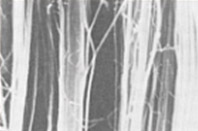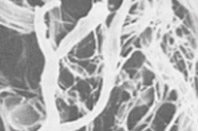Myofascial Release
Myofascial Release (MFR) “Myo” meaning muscle and “fascia” meaning connective tissue, is the term used to describe the matrix created by muscle and connective tissue. Myofascial Release (MFR) is a very effective hands-on technique that can help relieve pain and restore function by providing sustained pressure in the form of a specific stretch into myofascial restrictions (tightness in connective tissue, scar tissue, injured areas). Because the collagenous fibers of fascia can often be extremely tough and resistant to stretch, it is important to keep the pressure and the stretch extremely mild and sustained over time. The theory of Myofascial Release requires an understanding of the fascial system. The fascia is a specialized system of the body that has an appearance similar to a spider’s web or a sweater. I actually think it similar to thick panty hose or leggings.
Densely woven, this connective tissue covers the entire body. It twists and turns around every muscle, bone, nerve, artery and vein as well as all of the internal organs including the heart, lungs, brain and spinal cord. The most interesting aspect of the fascial system is that it is actually one structure that exists from head to toe without interruption. In this way you can begin to see that each part of the entire body is connected to every other part by the fascia. Like the yarn in a sweater, it is one piece that makes the entire unit.
In the normal healthy state, the fascia is relaxed and somewhat wavy in configuration. It has the ability to stretch and move without restriction. When we experience physical trauma, scarring, or inflammation, however, the fascia loses its pliability. It becomes tight, restricted and a source of tension to the rest of the body. See the pictures below.
As the fascia surrounds and attaches to all structures, it plays an important role in the support of our bodies. These structures would not be able to provide the stability without the constant pull of the fascial system. In fact, our bones can be thought of as tent poles, which cannot support the structure without the constant support of the guide wires (or fascia) to keep an adequate amount of tension to allow the tent (or body) to remain upright with proper equilibrium.

Healthy

Traumatized
Considering fascia permeates all regions of the body and is interconnected, when it scars and hardens in one area (following injury, inflammation, disease, surgery, or even long term poor posture, etc.), it can put tension on adjacent pain-sensitive structures as well as on structures in far-away areas and with cumulative effects. The fascia can exert excessive pressure producing pain or restriction of motion as well as the creation of compensatory patterns influencing and possibly changing virtually every aspect of our bodies and even minds. These changes affect our flexibility and stability, and are a determining factor in our ability to withstand stress and strain.
With Myofascial Release each patient can be viewed and treated as a unique individual. Unlike some other forms of therapy, there is no regimented protocol restricting the way a practitioner works with his patient. One-on-one therapy sessions are hands-on treatments during which therapists use a multitude of Myofascial Release techniques and movement therapy. I personally like to go one step further in my sessions by blending the changes through the entire body so the body understands that a correction has been made and that fascia in its entirety will follow suit. Practitioners also promote independence through education in proper body mechanics and movement, through the enhancement of strength, flexibility, postural and movement awareness.
Changes made in the myofascial system via myofascial release are deep and usually long lasting.
Myofascial Release: Benefits
One of the greatest benefits, I think, is the whole body approach which gives the mind, body and spirit a much welcomed break. Many studies have found Myofascial Release to be a very effective method of pain management. If you’ve suffered from severe injury or pain, numerous sessions may be required; but it’s likely that you will see a reduction in pain and increase in mobility from the start.
Some of the benefits of Myofascial Release include:
- Reduction or elimination of neck pain
- Reduction or elimination of headaches and migraine headaches
- Reduction in symptoms of head trauma
- Relief from fibromyalgia
- Relief from chronic pain & dysfunction
- Relief from chronic fatigue syndrome
- Relief from birth trauma
- Assistance in recovery from recurring sports injuries
- Recovery from auto or other accidents
Myofascial Release: Why It Works
In its healthy and fully functional state, fascia is elastic and supple. It rebounds and relaxes easily and movement is clean and full. When we experience injury, illness, surgery, etc. the fascia will often become tight, twisted and restricted in response. Your fascia is so intelligent that when injured, it will become tight to protect you from further injury. These are normal and healthy responses to protect your body while healing is taking place. The problem arises when we use compensatory movement patterns in order to keep going. As a result of our “when the going gets tough, the tough get going mentality” we usually end up compounding the injury with unnecessary stressors. The areas within and around the fascia can become more painful, tight and restricted in motion and this is why we need to seek help. If not corrected, the fascia will begin to twist more and begin to impact other areas of the body.
Here is an example of what I mean. Imagine putting on a tight sweater over a t-shirt or maybe a pair of panty hose under a skirt. As you put them on you accidentally twist. As you begin to move, your body feels that twisting and restricted movement in the sweater or panty hose. You know instinctively that something is wrong and you want to correct it but you don’t have time to change so you wiggle a little and get a small amount of room to adjust but it’s not quite complete. You go through your day with that twist but you notice that every movement you make is impacted by that twist. The shirt under your sweater or the skirt over the panty hose begins to twist too. Your restriction is increased and now you are walking funny to adapt. Mid afternoon comes and your shoulder or back is a little achy. You may even have a line of tension in the twisted area. By the end of the day, you’re tired and irritated. All you want is to quickly get that garment off and really stretch, right?
Now this is a simplified analogy of how fascia can act when traumatized but it gives you an idea of how just a small twist can create big problems. Left untreated, over time the problems will increase and more areas of the body will be affected.
A skilled myofascial therapist can help you untwist, stretch and regain your function and mobility. With gentle sustained pressure at the barrier or restriction (from 90 seconds to 2 minutes) the tissues will begin to soften, rehydrate and release. It may be necessary to repeat this several times until each subsequent barrier is found and released.
Stretching and self-treatment techniques are an important part of the Myofascial Release Therapy. For optimal results, it’s important for you to take an active role in your recovery. Not only will you heal faster, but it will be easier for you to maintain the benefits of treatment.
Myofascial Release: History
It is believed that the Myofascial Release theory originated in the 19th century from Andrew Taylor Still, the founder of osteopathic medicine. Over time, the theory developed and differing methodologies (direct and indirect) evolved.
In the 1970s, a physical therapist named John Barnes began developing his approach to Myofascial Release. He established a teaching center and multi-faceted training seminar, which has educated more than 50,000 therapists. Myofascial Release became a popular form of therapy in the late 1990s, when patients realized its potential for pain management and increased flexibility. Myofascial Release became a popular form of massage therapy in the late 1990s, when patients realized its potential for pain management and increased flexibility.
Myofascial Release: FAQs
• Neck & Back Pain • Headaches • Head Trauma • Fibromyalgia • Scoliosis • Chronic Pain & Dysfunction • Chronic Fatigue Syndrome • Birth Trauma • Pediatrics • Temporomandibular Problems • Recurring Sports Injuries
Numerous studies (Google studies on the efficacy of myofascial release) have indicated that Myofascial Release can be very effective and often more effective than other methods of pain management. In cases where severe injury or pain was present, numerous sessions were required; however, a reduction in pain and an increase in mobility was documented throughout the treatments.
In the hands of a skilled practitioner, MFR is very gentle but do not let the gentleness deceive you. Each Myofascial Release Treatment session is performed directly on skin without oils, creams or machinery enabling the therapist to accurately detect fascial restrictions and apply the appropriate amount of sustained pressure to facilitate release of the fascia. The effects of the treatment may not be felt immediately but within a few hours to a day, the effects will become more evident. An increase in pain may occur after treatment but it is commonly followed by remarkable improvement. Sometimes new pains in new areas will be experienced. There is sometimes a feeling of lightheadedness or nausea and there are times when patients experience a temporary emotion change. All of these are normal reactions of the body to the profound, but positive, changes that have occurred by releasing fascial restrictions. I have found in my practice that employing the use of lymphatic drainage in combination with MFR keeps discomfort to a minimum. It is believed that a release of tight tissue is accompanied by a release of trapped metabolic waste products in the surrounding tissue and blood stream. I always suggest that treatments be followed by a lot of water to "flush” the waste out of the body and keep post treatment side effects down.
Some contraindications to Myofascial release are its use on acute fractures, someone with osteoporosis, arthritis, on anyone with skin conditions, and over areas with heavy edema.
The Myofascial Release theory has been documented since the 19th century and is most often cited to be the work of Andrew Taylor Still, the founder of Osteopathic Medicine. Through the years, many doctors became interested in the theory and differing methodologies (direct and indirect) evolved. The term myofascial release was first coined in 1981 in its use as a title in a Michigan State University course. In the 1970s, John Barnes began developing his approach to Myofascial Release and under much scrutiny; he created a teaching center and a multi faceted training seminar. He has trained more than 50,000 therapists of which I am one.
Jack MorrisonLCSW
The sessions I have had with Carol Bilich have not only helped my body heal quickly but also have increased my overall energy. She is truly, a rare talent. Carol is able to combine a high degree of intelligence, skill, compassion, and intuition to give each of her clients the support they need. I am deeply appreciative of the work she has done for me.
Recent Posts
-

Ollie’s Area
Carol always says she thinks I can talk and I d... -

Adventures in Prolo Therapy Continues Part 2
I recently had my sixth series of prolo therapy... -

5 Reasons High Fructose Corn Syrup Will Kill You by Dr. Mark Hyman
IF YOU CAN’T CONVINCE THEM, CONFUSE THEM. —Harr... -

Cuboid Syndrome
Recently I had the great displeasure of creatin... -

How do I know if I’m gluten intolerant? by Mark Hyman
THERE ARE TWO WAYS TO TELL if you are gluten in...
